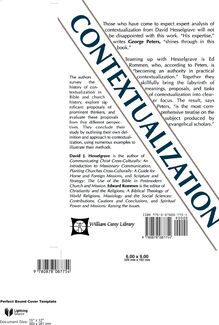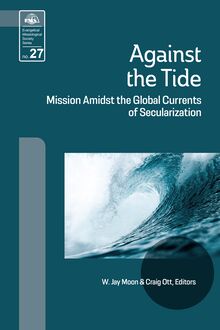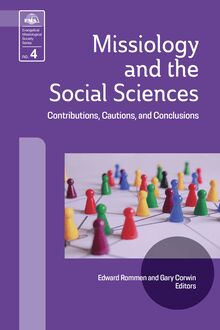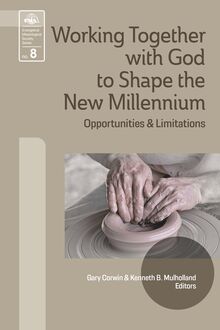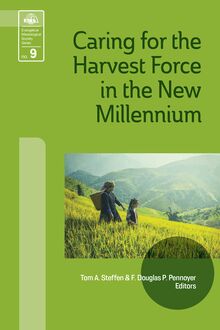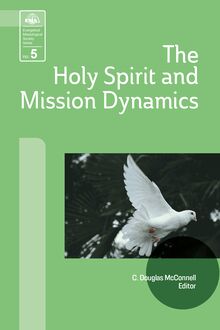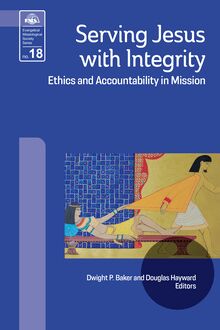-
 Univers
Univers
-
 Ebooks
Ebooks
-
 Livres audio
Livres audio
-
 Presse
Presse
-
 Podcasts
Podcasts
-
 BD
BD
-
 Documents
Documents
-
- Cours
- Révisions
- Ressources pédagogiques
- Sciences de l’éducation
- Manuels scolaires
- Langues
- Travaux de classe
- Annales de BEP
- Etudes supérieures
- Maternelle et primaire
- Fiches de lecture
- Orientation scolaire
- Méthodologie
- Corrigés de devoir
- Annales d’examens et concours
- Annales du bac
- Annales du brevet
- Rapports de stage
La lecture à portée de main
Vous pourrez modifier la taille du texte de cet ouvrage
Découvre YouScribe en t'inscrivant gratuitement
Je m'inscrisDécouvre YouScribe en t'inscrivant gratuitement
Je m'inscrisEn savoir plus
Vous pourrez modifier la taille du texte de cet ouvrage
En savoir plus

Description
Foreword by George W. Peters
Preface
Part 1 The Historical Background of Contextualization
Introduction to Part 1
1. Reflections from the Old and New Testaments
2. Reflections from the History of the Church and its Missions
3. What Is New?
Part 2 Contemporary Understanding of and Approaches to Contextualization
Introduction to Part 2
4. Europe: Jurgen Moltmann
5. Anglo-America: Bruce J. Nicholls and Charles H. Kraft
6. Asia: M.M. Thomas and Kosuke Koyama
7. Latin America: Gustavo Guierrez and Jose Miguez-Bonino
8. Africa: John S. Mbiti and Byang H. Kato
9. The Middle East: Kenneth E. Bailey and Tim Matheny
Part 3 Framework for Analysis
Introduction to Part 3
10. A Philosophical Perspective: Genres of Revelational Epistemology
11. A Theological Perspective: The Contextualization Continuum
12. An Anthropological Perspective: Language and Meaning
13. A Hermeneutical Perspective: Basic Assumptions and Patterns
14. A Communication Perspective: The Semantic Problem and the Communication Process
Part 4 Authentic and Relevant Contextualization: Some Proposals
Introduction to Part 4
15. Contextualization That Is Authentic and Relevant
16. A Contextualized Christian Worldview: A Catechism for Tribals
17. A Contextualization of the New Birth Message: an Evangelistic Tract for Chinese People
18. The Doctrine of Justification by Faith Contextualized: Commentaries on Galatians 2 for Sixteenth-Century Europe and Twentieth-Century India
19. A Contextualization for Muslims: A Debate
20. A Contextualized Sermon for Nominal Christian in Central and Northern Europe: The Lordship of Christ
Bibliography
Index of Subjects
Sujets
Informations
| Publié par | William Carey Publishing |
| Date de parution | 01 septembre 2000 |
| Nombre de lectures | 0 |
| EAN13 | 9781645083290 |
| Langue | English |
Informations légales : prix de location à la page 0,0700€. Cette information est donnée uniquement à titre indicatif conformément à la législation en vigueur.
Extrait
Copyright 1989, 2000 by
David J. Hesselgrave
ISBN: 978-0-87808-775-4
Requests to reproduce any part of this work should be addressed to: permissions@wellbooks
William Carey Library
P.O. Box 40129
(626) 798-0819
Library of Congress Cataloging-in-Publication Data
Hesselgrave, David J.
Contextualization: meanings, methods, and models / David J.
Hesselgrave and Edward Rommen; foreword by George W. Peters,
p. cm.
Originally published: Grand Rapids, Mich.: Baker Book House, cl989.
Includes bibliographical references and index.
ISBN: 978-0-87808-775-4(pbk)
1. Christianity and culture. 2. Missions-Theory. I Rommen,
Edward, 1947 - II. Title.
BR115.C8 H47 2000
261-dc21
00-040321
CIP
Unless noted otherwise, the Scripture quotations are from the Holy Bible,
New International Version, Copyright 1973, 1978, 1984 International Bible Society. Used by permission of Zondervan Bible Publishers. The other versions cited are the New American Standard Bible (NASB) and the King James Version (KJV).
An edited version of Contextualization and Epistemology from Hermeneutics, Inerrancy and the Bible by Earl D. Radmacher and Robert D. Preus is copyright 1984 by the Zondervan Publishing House and is used by permission. An edited version of Authentic Contextualization: Taking the Truth Out of the Top Drawer and Placing It on the Lower Shelf, from A Journal of Christian Studies 5, nos. 1 and 2 (Winter 1985-86): 79-96, appears with the permission of Lincoln Christian Seminary and the journal editors.
To the memory of Donald A. McGavran and J. Herbert Kane and George W. Peters
Contents
Foreword by George W. Peters
Preface
Part 1 The Historical Background of Contextualization
Introduction to Part 1
1 Reflections from the Old and New Testaments
2 Reflections from the History of the Church and Its Missions
3 What Is New?
Part 2 Contemporary Understandings of and Approaches to Contextualization
Introduction to Part 2
4 Europe: Jurgen Moltmann
5 Anglo-America: Bruce J. Nicholls and Charles H. Kraft
6 Asia: M. M. Thomas and Kosuke Koyama
7 Latin America: Gustavo Gutierrez and Jose Miguez-Bonino
8 Africa: John S. Mbiti and Byang H. Kato
9 The Middle East: Kenneth E. Bailey and Tim Matheny
Part 3 Frameworks for Analysis
Introduction to Part 3
10 A Philosophical Perspective: Genres of Revelational Epistemology
11 A Theological Perspective: The Contextualization Continuum
12 An Anthropological Perspective: Language and Meaning
13 A Hermeneutical Perspective: Basic Assumptions and Patterns
14 A Communication Perspective: The Semantic Problem and the Communication Process
Part 4 Authentic and Relevant Contextualization: Some Proposals
Introduction to Part 4
15 Contextualization That Is Authentic and Relevant
16 A Contextualized Christian Worldview: A Catechism for Tribals
17 A Contextualization of the New Birth Message: An Evangelistic Tract for Chinese People
18 The Doctrine of Justification by Faith Contextualized: Commentaries on Galatians 2 for Sixteenth-Century Europe and Twentieth-Century India
19 A Contextualization for Muslims: A Debate
20 A Contextualized Sermon for Nominal Christians in Central and Northern Europe: The Lordship of Christ
Bibliography
Index of Subjects
Foreword
The missiological world is full of such concepts as indigenization, communication, conceptualization, incarnation, inculturation, and last but not least contextualization. Words such as these are crowding the vocabulary of missiology. Sometimes, like clouds floating in the sky, they neither permit the sun to break through and warm the people nor allow rain to refresh the parched fields. Such concepts are widely used and hotly debated in missiological circles because standard definitions are hard to come by. It seems that every author ascribes to them his or her own meaning. The concepts involved desperately need to be articulated even though they are, so far, perhaps more felt than clearly defined.
It is to be expected that well-qualified, Bible-believing, scientifically and theologically trained missiologists in the School of World Mission and Evangelism of Trinity Evangelical Divinity School would tackle this situation and seek to bring some clarity into the most used (perhaps also the most misused, misunderstood, and debated) concept of contextualization. Drs. Hesselgrave and Rommen deserve to be congratulated for the work they have done. I believe this book is the most comprehensive treatise on the subject produced by evangelical scholars. It clearly draws the line between legitimate and nonlegitimate- between biblical and liberal-contextualization.
The application of the principle of continuum must not be interpreted as though there is only a quantitative difference between approaches and as though an inner relationship exists in the various methods and models of contextualization. Rather, we must see the polarity to which the presuppositions of the various contextualizers lead. The presuppositions concerning the Word of God written have created the unbridgeable gulf between the conservative and the liberal approaches.
This document gives clear evidence that the authors have spared no effort to acquaint themselves with representative literature related to the subject of contextualization and that they have mastered the subject. Now, in a competent manner, they evaluate the contemporary meanings and practice of contextualization. Their respect for the Bible as the infallible Word of God written provides a firm foundation, and thus the work constitutes a safe guide through the wilderness of ideas about contextualization for all who strive to remain true to the Bible message in contextualizing its message for every nation.
This book gives every evidence of being a scholarly treatise, and such it is. It is not written for entertainment but in order to clarify issues and to serve missionaries and all who are reaching for ways to make the message of God relevant to our age and to people of various worldviews, cultures, and psychologies. At the same time it is a staunch defense of the position of those who believe that contextualization can be done without whittling away the sharp edge of the biblical gospel. The gospel is relevant to all ages, cultures, and peoples; but its communication must be contextualized in order for it to be experienced as the living message of God.
No book has ever been written that answered all the questions that can be asked. Neither does this one. The authors, however, approach the subject with a broad perspective-the historical, psychological, sociological, anthropological, theological, and practical points of view required to clarify the various meanings and methods of contextualization. Examples and diagrams illuminate and assist our understanding of the meaning and practice of contextualization. It should be kept in mind that Dr. Hesselgrave is one of the most widely recognized authorities in cross-cultural communication. His expertise shines throughout this book. Dr. Rommen is becoming an authority in practical contextualization, holding two doctorates in closely related fields.
I thank the Lord for this work, and I thank the authors for taking the time and expending the energy required in preparation of this study. It will serve well the evangelical constituency and all others who search for the truth in contextualization. I heartily recommend this book to my co-workers.
George W. Peters
Preface
Undergirding this book is a simple thesis: namely, contextualization is more than a neologism, it is a necessity. Of course, this thesis rests on certain presuppositions. First, it is imperative that the Great Commission be fulfilled and the world be evangelized. Second, however world evangelization is defined, at the very least it entails an understandable hearing of the gospel. Third, if the gospel is to be understood, contextualization must be true to the complete authority and unadulterated message of the Bible on the one hand, and it must be related to the cultural, linguistic, and religious background of the respondents on the other.
Numerous books and articles on contextualization are available; however, works that are evangelical are comparatively few. Moreover, to our knowledge there is no single volume that undertakes to do exactly what we have attempted here-namely, to explain and evaluate a variety of contextualization meanings, methods, and models from an evangelical perspective. Obviously, this attempt entails certain risks. We recognize that there is much more to be said on the topics we deal with here. Also, important contextualization proposals necessarily have been omitted. But our hope is that the proposals we have selected are sufficiently representative and the evaluations sufficiently comprehensive that theorists and practitioners alike will be enabled to grasp the essentials of an evangelical perspective on this new and important subject in a helpful way. Specifically, it is our hope that in some small way this book will contribute to the tasks of distinguishing between aberrant and valid contextualization attempts, of reinforcing proposals that are scripturally sound and culturally viable, and of contextualizing the gospel in ways that will contribute to Great Commission mission around the world.
It is only right and proper to acknowledge the contributions of numerous individuals and organizations that have made this volume possible. The encouragement and support of Trinity Evangelical Divinity School, and the liberal sabbatical policy of the board of education of that institution, have provided incentives and opportunities that have resulted in this volume. Fellow faculty members and students at Trinity Evangelical Divinity School-School of World Mission and Evangelism have played an important role. The officers and editors of Baker Book House have been most supportive and helpful. Our secretaries, Mrs. Judy Tetour and Miss
-
 Univers
Univers
-
 Ebooks
Ebooks
-
 Livres audio
Livres audio
-
 Presse
Presse
-
 Podcasts
Podcasts
-
 BD
BD
-
 Documents
Documents
-
Jeunesse
-
Littérature
-
Ressources professionnelles
-
Santé et bien-être
-
Savoirs
-
Education
-
Loisirs et hobbies
-
Art, musique et cinéma
-
Actualité et débat de société
-
Jeunesse
-
Littérature
-
Ressources professionnelles
-
Santé et bien-être
-
Savoirs
-
Education
-
Loisirs et hobbies
-
Art, musique et cinéma
-
Actualité et débat de société
-
Actualités
-
Lifestyle
-
Presse jeunesse
-
Presse professionnelle
-
Pratique
-
Presse sportive
-
Presse internationale
-
Culture & Médias
-
Action et Aventures
-
Science-fiction et Fantasy
-
Société
-
Jeunesse
-
Littérature
-
Ressources professionnelles
-
Santé et bien-être
-
Savoirs
-
Education
-
Loisirs et hobbies
-
Art, musique et cinéma
-
Actualité et débat de société
- Cours
- Révisions
- Ressources pédagogiques
- Sciences de l’éducation
- Manuels scolaires
- Langues
- Travaux de classe
- Annales de BEP
- Etudes supérieures
- Maternelle et primaire
- Fiches de lecture
- Orientation scolaire
- Méthodologie
- Corrigés de devoir
- Annales d’examens et concours
- Annales du bac
- Annales du brevet
- Rapports de stage
